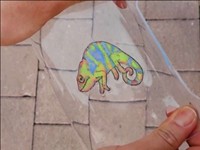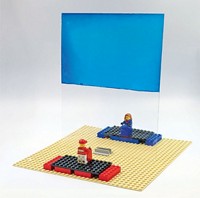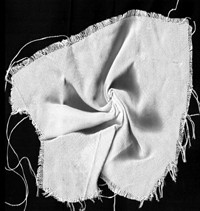Advertisement
Grab your lab coat. Let's get started
Welcome!
Welcome!
Create an account below to get 6 C&EN articles per month, receive newsletters and more - all free.
It seems this is your first time logging in online. Please enter the following information to continue.
As an ACS member you automatically get access to this site. All we need is few more details to create your reading experience.
Not you? Sign in with a different account.
Not you? Sign in with a different account.
ERROR 1
ERROR 1
ERROR 2
ERROR 2
ERROR 2
ERROR 2
ERROR 2
Password and Confirm password must match.
If you have an ACS member number, please enter it here so we can link this account to your membership. (optional)
ERROR 2
ACS values your privacy. By submitting your information, you are gaining access to C&EN and subscribing to our weekly newsletter. We use the information you provide to make your reading experience better, and we will never sell your data to third party members.
Environment
Newscripts
Bug Battle Goes Au Naturel, Plastic Restoration, Clothes Stay Clean
by K. M. REESE
August 9, 2004
| A version of this story appeared in
Volume 82, Issue 32
Bug battle goes au naturel
Chemical warfare against mosquitoes continues. The latest buzz is that cinnamon oil may be an effective nature-friendly weapon against mosquito larvae.
Traditional chemical larvicides, such as organophosphates, have been effective in controlling mosquitoes, but not without environmental and health side effects. Researchers at National Taiwan University (NTU), Taipei, and Chang Gung University, Tao-Yuan, Taiwan, tested several compounds found in Taiwan's indigenous cinnamon tree, Cinnamomum osmophloeum, for their effectiveness in killing the larvae of Aedes aegypti, the ubiquitous mosquito responsible for transmitting dengue and yellow fever.
In the July issue of the Journal of Agricultural & Food Chemistry [52, 4395 (2004)], the researchers report that cinnamaldehyde, a main compound in C. osmophloeum leaf oils, was most effective at taking a bite out of larval populations. According to lead researcher Shang-Tzen (Peter) Chang of NTU, cinnamaldehyde should be effective against other mosquito species as well. In fact, he's already seen positive results against Aedes albopictus, the Asian tiger mosquito.
Though lethal to larvae, cinnamaldehyde is responsible for the odor and flavor associated with cinnamon and is commonly used as a flavoring agent.
Chemists at Bayer MaterialScience AG are applying their expertise to a new restoration project: preserving polyurethane art objects from the 1960s. Bayer experts recently took part in an international symposium on ways to restore and preserve furniture and decorative objects made from synthetic materials. The symposium was organized by the AXA Art Conservation Project and held at the Vitra Design Museum in Weil am Rhein, Germany.
Polyurethane, which was first developed by Otto Bayer in 1937, became a chic designer material in the 1960s because of its modern aesthetic and extreme versatility. Two famous examples are Danish designer Verner Panton's 1967 Panton Chair, the first cantilevered chair made from a single piece of plastic, and Italian architect Gaetano Pesce's 1969 UP series, which were foam armchairs of various sizes and colors that were vacuum-sealed flat and would expand when unwrapped.
Those involved in the AXA gathering are attacking the deterioration problem with 21st-century technology. In addition to seeking the latest materials chemistry advice, conservationists enlisted engineers from Konica Minolta Photo Imaging Europe GmbH to develop a method for scanning the aging art and creating 3-D models for digital reference.
While original 1960s furniture might be the worse for wear these days, retro enthusiasts, never fear: "Classic" Panton and Pesce works are still in production and are available for online purchase.
Researchers at Hong Kong Polytechnic University are developing a fabric that never needs washing. Just step outside, and ultraviolet rays from the sun will zap away dirt, pollutants, and microorganisms.
In a recent study, Walid A. Daoud and John H. Xin of the Institute of Textiles & Clothing coated a patch of cotton fabric with nanoparticles of titanium dioxide. In the anatase form, titanium dioxide acts as an efficient photocatalyst. When exposed to ultraviolet light, the particles initiate a chain of events that break down dirt and other organic materials into smaller particles such as carbon dioxide and water [J. Am. Ceram. Soc., 87, 953 (2004)].
"This technology could revolutionize the textile industry and transform the way we live," says Daoud. "We expect the first consumers to be Army people, travelers, and hikers who don't have access to a lot of water and/or time to wash their clothes." The researchers can't say, however, whether the technology will work on dirt that is not exposed to the sun, such as that on the underside of shirts. More research is under way. In the meantime, some companies have expressed interest in the technology, and Daoud expects a self-cleaning fabric to hit the market within five years.
Ken is away. This week's items were contributed by Rachel Pepling, Victoria Gilman, and Linda Wang






Join the conversation
Contact the reporter
Submit a Letter to the Editor for publication
Engage with us on Twitter